Hydrangeas are among the most beloved and popular flowering shrubs in gardens worldwide. Their stunning blooms, ranging from delicate pastels to vibrant hues, add an enchanting charm to any landscape. However, to keep these beauties thriving, it’s essential to understand their unique needs and provide proper care. Our blog is a perfect place to find all the information you need.
Understanding Hydrangeas
Hydrangeas, with their lush foliage and abundant flowers, are known for their versatility and adaptability to various growing conditions. From the classic mophead and lacecap varieties to the elegant panicle hydrangeas, each type offers its own allure. Understanding the differences between these varieties can help gardeners choose the perfect hydrangea for their landscape.
Importance of Proper Care
Proper care is vital for ensuring the health and longevity of hydrangeas. Factors such as soil quality, sunlight exposure, watering frequency, and pruning techniques all play a role in the overall well-being of these plants. By providing the right care, gardeners can enjoy a season-long display of stunning hydrangea blooms.
Hydrangea Varieties
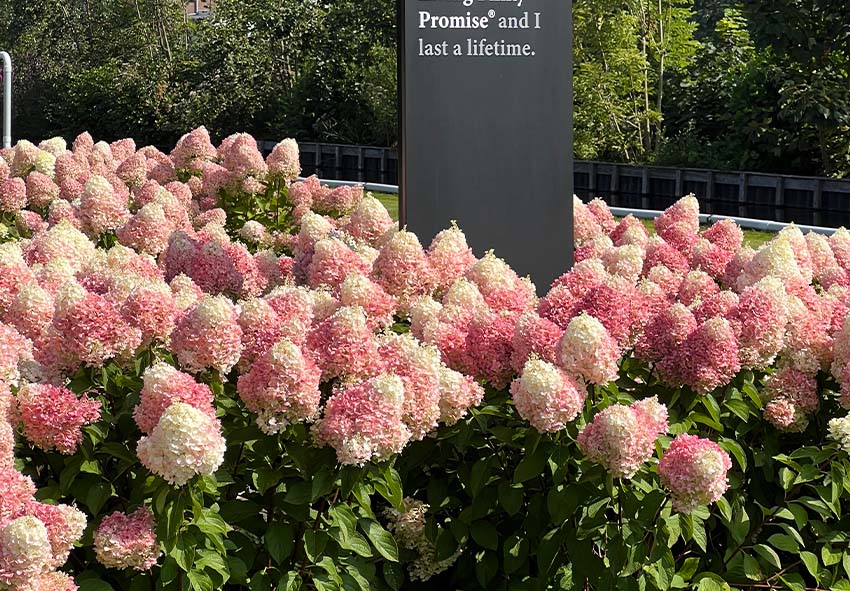
Hydrangeas come in a wide array of varieties, each with its own unique characteristics and growing requirements. From the classic mophead to the elegant lacecap and the hardy panicle hydrangea, there’s a hydrangea variety to suit every garden style and preference.
Popular Hydrangea Varieties
Mophead hydrangeas, with their large, round flower clusters, are perhaps the most iconic of all hydrangea varieties. These blooms come in shades of pink, blue, purple, and white, adding a burst of color to any garden. By selecting the right varieties and providing proper care, gardeners can enjoy a spectacular display of hydrangea blooms year after year:
| Botanical Name | Color | Flowering Period | Growing Requirements | Particularities |
| Hydrangea macrophylla | Various shades of blue, pink, purple, and white | Summer to early fall | Partial shade to full shade, moist, well-draining soil | Known for its large, showy mophead or lacecap flowers |
| Hydrangea paniculata | White, turning pink or red with age | Summer to fall | Full sun to partial shade, well-drained soil | Produces conical-shaped flower clusters |
| Hydrangea arborescens | White | Late spring to summer | Partial shade to full shade, moist, well-draining soil | Features round, snowball-like flower clusters |
| Hydrangea serrata | Blue, pink, or white, depending on soil pH | Summer to early fall | Partial shade to full shade, acidic soil for blue blooms | Similar to H. macrophylla but smaller in size |
| Hydrangea quercifolia | White, turning pink or purple with age | Late spring to summer | Partial shade to full sun, well-drained soil, acidic pH | Notable for its oakleaf-shaped foliage and cone-shaped flower clusters |
Understanding the characteristics and growing preferences of each hydrangea variety is essential for successful cultivation in the garden.
Planting Hydrangeas
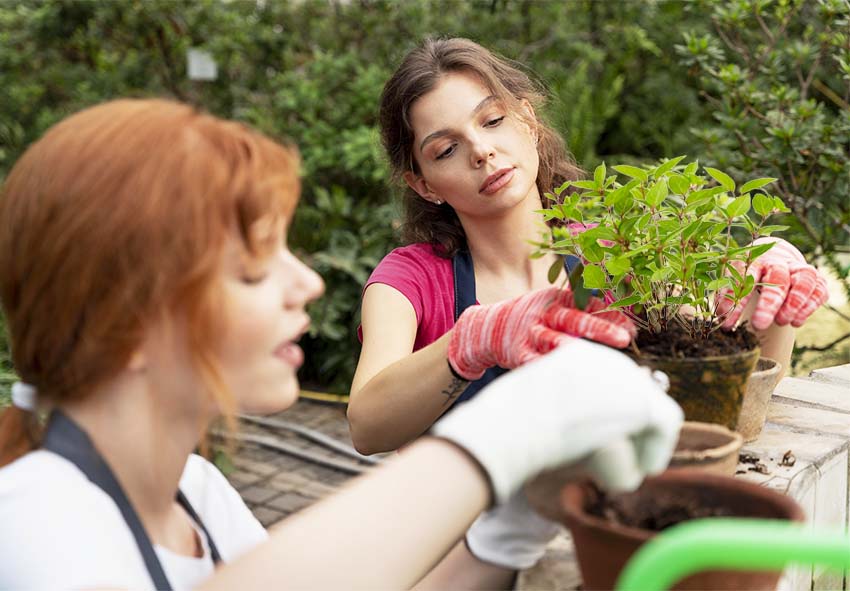
Hydrangeas, with their stunning blooms and lush foliage, can be a beautiful addition to any garden landscape. Proper planting is crucial to ensure these flowering shrubs thrive and flourish year after year.
Choosing the Right Location
Selecting the perfect planting location is the first step in ensuring the success of your hydrangeas. While choosing it, you should consider few factors:
- Assess the sunlight exposure in your garden to determine the ideal location for your hydrangeas.
- Ensure the soil quality is suitable for hydrangeas, with good drainage and a slightly acidic pH.
- Take into account the available space and the mature size of the hydrangea variety you plan to plant.
- Consider the microclimate of your garden, including factors like wind exposure and nearby structures that may affect temperature and humidity levels.
- Keep in mind that most hydrangea varieties prefer partial shade, although some can tolerate full sun or full shade depending on the specific variety and local conditions.
Soil Preparation
Preparing the soil is essential for creating an optimal growing environment for hydrangeas. These plants prefer well-draining, fertile soil with a slightly acidic pH level. Amend heavy clay soils with organic matter such as compost or peat moss to improve drainage and fertility. Conduct a soil test to determine the pH level, and adjust it as needed to ensure it falls within the preferred range for hydrangeas.
Planting Techniques
Once you’ve selected the perfect location and prepared the soil, it’s time to plant your hydrangeas. Here are some step-by-step tips that will help you with it:
- Dig a hole twice as wide and just as deep as the root ball of the hydrangea plant.
- Gently remove the plant from its container and place it in the center of the hole, ensuring the top of the root ball is level with the surrounding soil.
- Backfill the hole with soil, gently firming it around the base of the plant to eliminate air pockets.
- Water the newly planted hydrangea thoroughly to settle the soil and provide moisture to the roots.
- Space multiple hydrangea plants according to their mature size, typically between 3 to 6 feet apart, to allow for proper air circulation and growth.
With the right planting techniques, your hydrangeas will establish quickly and begin to thrive in their new home. And proper care for hydrangeas after planting will also extend the flowering period of these magnificent blooms.
Hydrangea Pruning Guide
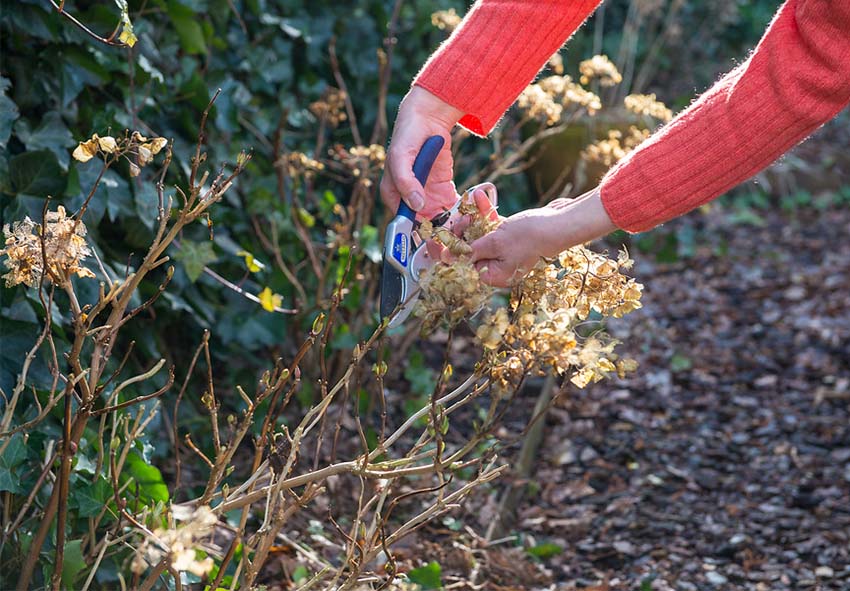
Pruning is an essential aspect of hydrangea care that helps maintain the health, shape, and flowering of these beautiful shrubs. Understanding when and how to prune hydrangeas is key to ensuring they remain vigorous and vibrant year after year.
When to Prune Hydrangeas
The timing of pruning hydrangeas depends on their blooming habits, as different varieties bloom on old or new wood. For hydrangeas that bloom on old wood, such as mophead and lacecap hydrangeas, pruning should be done immediately after flowering in late summer or early fall. Varieties that bloom on new wood, like panicle hydrangeas, can be pruned in late winter or early spring before new growth begins.
Pruning Techniques
Pruning hydrangeas involves removing dead or damaged branches, as well as shaping the plant to promote healthy growth and abundant flowering. Use clean, sharp pruning shears to make precise cuts, and avoid pruning too late in the season, as it can remove flower buds for the following year.
Pruning Tips for Different Varieties
Each hydrangea variety may require slightly different pruning techniques to achieve the best results:
- Mophead and lacecap hydrangeas
These varieties benefit from selective pruning to remove spent flower heads and thin out crowded branches. This practice encourages new growth and improves overall plant health.
- Panicle hydrangeas
Rejuvenation pruning is ideal for this variety, where older stems are cut back to ground level or to a few inches above to encourage vigorous new growth and improved flowering in the following season.
- Oakleaf hydrangeas
Minimal pruning is required for oakleaf hydrangeas, primarily to remove dead or damaged branches and to shape the plant as needed. Avoid heavy pruning, as it can reduce flowering potential.
- Smooth hydrangeas
Prune smooth hydrangeas in late winter or early spring by removing dead or weak stems and cutting back old flower heads to promote new growth and maintain a tidy appearance.
- Climbing hydrangeas
These plants require minimal pruning once established but may benefit from occasional thinning to remove excessive growth or deadwood. Avoid heavy pruning, as it can disrupt flowering and growth patterns.
Understanding the specific needs of each hydrangea variety will help you prune them effectively for optimal health and beauty.
Watering and Feeding Hydrangeas
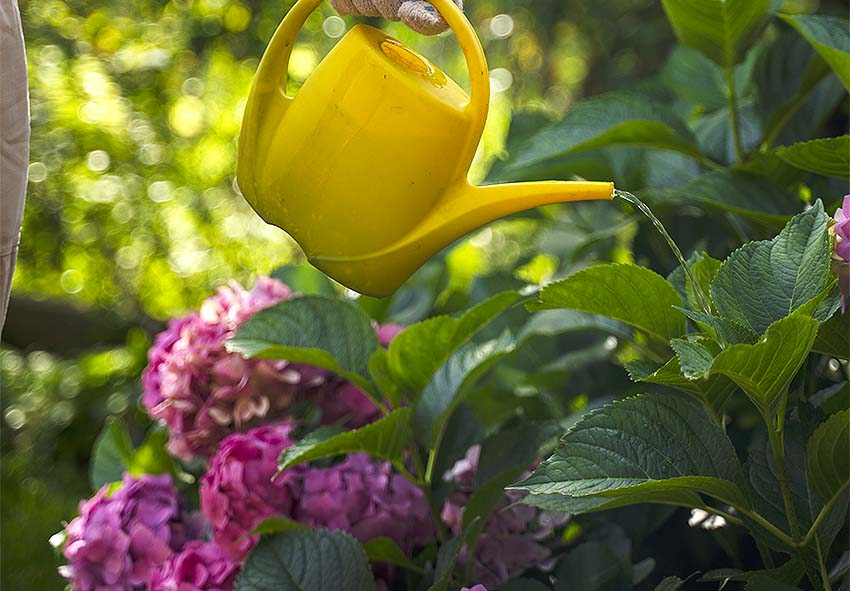
Proper watering and feeding are crucial aspects of hydrangea care that directly impact their growth, flowering, and overall health. Understanding the specific water and nutrient requirements of hydrangeas will help you keep them thriving in your garden.
Watering Requirements
Hydrangeas prefer moist, well-drained soil and benefit from regular watering, especially during periods of hot, dry weather. Aim to keep the soil consistently moist but not waterlogged, as excessive moisture can lead to root rot. Water hydrangeas deeply at the base of the plant to encourage deep root growth and resilience to drought.
Feeding Hydrangeas
Fertilizing hydrangeas provides essential nutrients that support vigorous growth and abundant flowering. Use a balanced, slow-release fertilizer formulated specifically for flowering shrubs, and apply it according to the manufacturer’s instructions. Avoid overfertilizing, as excessive nitrogen can stimulate lush foliage growth at the expense of flowers.
Avoiding Common Watering and Feeding Mistakes
Overwatering and underwatering are common mistakes that can stress hydrangeas and compromise their health. Monitor soil moisture levels regularly and adjust your watering schedule as needed based on weather conditions. Similarly, avoid applying fertilizer too close to the base of the plant or in excessive amounts, as it can burn the roots and damage the plant. By practicing proper watering and feeding techniques, you can ensure your hydrangeas receive the nutrients they need to thrive and produce stunning blooms season after season.
Hydrangea Care Throughout the Seasons
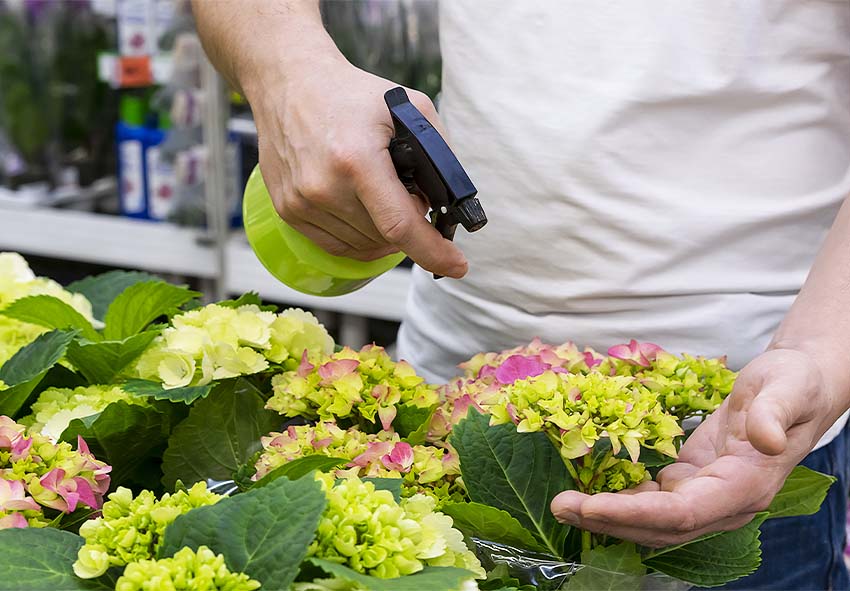
Caring for hydrangeas is a year-round commitment, with each season bringing its own set of tasks and challenges. By providing proper care and attention throughout the seasons, you can ensure that your hydrangeas remain healthy, vibrant, and full of blooms.
Spring Care
As the weather warms up and new growth emerges, spring is a crucial time for hydrangea care. Start by removing any dead or damaged branches from winter and tidying up the plant’s overall appearance. This is also the ideal time to apply a balanced, slow-release fertilizer to provide essential nutrients for healthy growth and flowering. Keep an eye out for emerging pests and diseases, and address any issues promptly to prevent them from spreading.
Summer Care
Summer brings warmer temperatures and increased sunlight, which can stress hydrangeas if not properly cared for. Ensure that your hydrangeas receive adequate water during periods of heat and drought, paying attention to soil moisture levels and watering deeply when necessary. Keep an eye out for common pests such as aphids and spider mites, and take steps to control them using environmentally friendly methods. Providing some shade during the hottest part of the day can help prevent sunburn and heat stress on the plants.
Fall Care
As temperatures begin to cool and days grow shorter, it’s time to prepare your hydrangeas for the coming winter. Start by deadheading any spent blooms and removing any dead or diseased foliage to prevent the spread of disease. Consider applying a layer of mulch around the base of the plants to help retain moisture and insulate the roots during the colder months. If you live in a region with harsh winters, consider providing additional protection for your hydrangeas by wrapping them in burlap or covering them with frost cloth when temperatures drop below freezing. With proper care and attention throughout the seasons, your hydrangeas will reward you with stunning blooms year after year.
Common Hydrangea Problems and Solutions
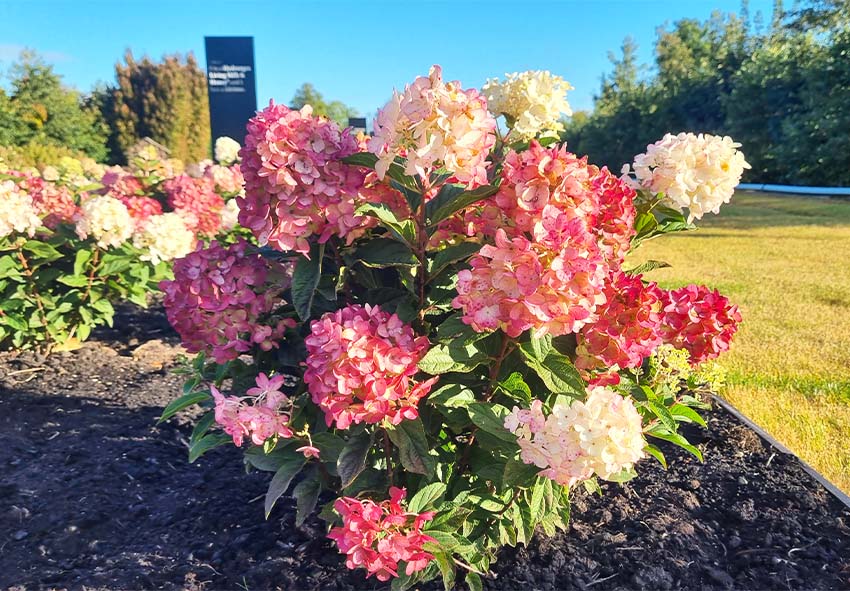
Even with the best care, hydrangeas can sometimes encounter problems that affect their health and appearance. Knowing how to identify and address these issues promptly is key to maintaining healthy, thriving plants.
Pest and Disease Management
Hydrangeas are susceptible to various pests and diseases that can wreak havoc on their foliage and blooms. Common pests include aphids, spider mites, and powdery mildew, while diseases such as root rot and bacterial leaf spot can also occur. Regularly inspect your hydrangeas for signs of pest infestation or disease, such as discolored or distorted leaves, wilting, or abnormal growth. If you notice any issues, promptly treat them using appropriate methods, such as insecticidal soap for pests or fungicides for diseases. Additionally, practicing good garden hygiene, such as removing debris and fallen leaves, can help prevent pest and disease problems from occurring in the first place.
Troubleshooting Common Issues
Despite your best efforts, you may encounter common issues with your hydrangeas, such as wilting, leaf discoloration, or a lack of blooms:
- Wilting: Ensure proper watering practices to prevent both underwatering and overwatering, and protect hydrangeas from extreme heat or drought stress.
- Leaf Discoloration: Test soil pH and nutrient levels to address any deficiencies or imbalances that may cause leaf discoloration, and implement pest control measures if necessary.
- Lack of Blooms: Follow appropriate pruning guidelines for different hydrangea varieties to avoid inadvertently removing flower buds, and ensure adequate sunlight exposure for blooming. Prune hydrangeas at the correct time of year to encourage flower bud development and blooming in the upcoming season.
By promptly identifying and addressing these common issues, you can help your hydrangeas thrive and flourish in your garden.
Enjoying and Using Hydrangeas

Once your hydrangeas are flourishing in your garden, there are many ways to enjoy their beauty and incorporate them into your surroundings. From creative arrangements to extending their blooming season, hydrangeas can bring joy and charm to various aspects of your life.
Creative Uses for Hydrangeas
Hydrangeas are not only beautiful in the garden but also make stunning additions to floral arrangements, bouquets, and home decor. Whether you’re planning a special event or simply want to brighten up your living space, hydrangeas can add a touch of elegance and color to any setting. Consider using hydrangeas as the focal point in a vase arrangement or mixing them with other flowers for a vibrant bouquet. You can also dry hydrangea blooms to create everlasting floral displays or wreaths that will last for months.
Extending the Blooming Season
While hydrangeas are known for their spectacular blooms, their flowering period can be relatively short-lived. However, with proper care and maintenance, you can prolong the blooming season of your hydrangeas and enjoy their beauty for as long as possible.
- Adequate Water and Nutrients
Provide consistent watering to hydrangeas throughout the growing season to ensure they receive sufficient moisture for healthy growth and flowering. Apply a balanced fertilizer formulated for flowering plants to provide essential nutrients that promote robust blooms.
- Regular Deadheading
Remove spent flowers promptly to encourage the plant to redirect energy into producing new blooms. Trim back faded or damaged blooms to improve the overall appearance of the plant and stimulate fresh growth.
- Variety Selection
Plant a variety of hydrangea species with different bloom times to extend the flowering season in your garden. Choose hydrangea cultivars known for their long-lasting blooms or those that bloom at different times throughout the summer and fall.
- Proper Care and Maintenance
Monitor the health of your hydrangeas regularly, checking for signs of stress, pests, or diseases. Prune hydrangeas selectively to remove dead or overcrowded branches and encourage new growth and flowering.
- Seasonal Attention
Adjust watering and fertilization practices according to the changing seasons and weather conditions. Provide winter protection for hydrangeas in colder climates to safeguard against frost damage and ensure healthy regrowth in spring.
With a little effort and attention to detail, you can maximize the beauty and longevity of your hydrangea blooms, allowing you to savor their splendor throughout the season.
Conclusion
After delving into the comprehensive guide on hydrangea care, you’re now equipped with the knowledge and tools to nurture these stunning blooms in your own garden. By implementing the tips and techniques outlined here, you can ensure that your hydrangeas thrive and flourish, gracing your outdoor space with their enchanting beauty and vibrant colors. You can also find more useful information about transplanting hydrangeas in our blog.
Don’t hesitate to put your newfound knowledge into practice and embark on your journey of hydrangea cultivation. With dedication and care, you’ll be rewarded with lush, healthy plants and an abundance of exquisite blooms. So roll up your sleeves, get your hands dirty, and let the magic of hydrangeas transform your garden into a captivating oasis of natural splendor.
Frequently Asked Questions (FAQs) about Hydrangeas
1. What are the different types of hydrangeas and how do I choose the right one for my garden?
There are several types of hydrangeas, including mophead, lacecap, and panicle varieties, each with its own unique characteristics and growing requirements. Consider factors such as flower color, size, and preferred growing conditions when selecting the right hydrangea for your garden.
2. How often should I water my hydrangeas, and what is the best watering technique?
Hydrangeas require regular watering, especially during hot and dry periods. Water deeply at the base of the plant to ensure thorough hydration, and avoid wetting the foliage to prevent fungal diseases. Monitor soil moisture levels and adjust watering frequency as needed to keep the soil consistently moist but not waterlogged.
3. When is the best time to prune hydrangeas, and how should I do it?
The timing and method of pruning depend on the type of hydrangea. Mophead and lacecap hydrangeas should be pruned selectively to remove spent flower heads and thin out crowded branches. Panicle hydrangeas respond well to rejuvenation pruning, where older stems are cut back to encourage new growth and improved flowering. Prune hydrangeas after they finish blooming, typically in late summer or early fall, to avoid removing flower buds for the next season.
4. Can I order Holland hydrangeas from your online store?
Yes, we offer a wide selection of hydrangeas, including some varieties originating from the Netherlands, renowned for their quality and beauty. Our online store Dutch-bulbs.com features a diverse range of hydrangeas, including panicle hydrangeas, lacecap hydrangeas, and mophead hydrangeas, among others. Explore our collection to find the perfect hydrangea varieties for your garden or landscaping projects.
5. Can I change the color of my hydrangea flowers, and if so, how?
The color of hydrangea flowers depends on the pH level of the soil. Acidic soil conditions (pH below 6) tend to produce blue flowers, while alkaline soil conditions (pH above 6) result in pink flowers. To change the color of hydrangea flowers, you can adjust the pH of the soil by adding amendments such as aluminum sulfate for blue flowers or lime for pink flowers. However, changing the soil pH may take time and may not produce immediate results.
Published: 14.05.2024
